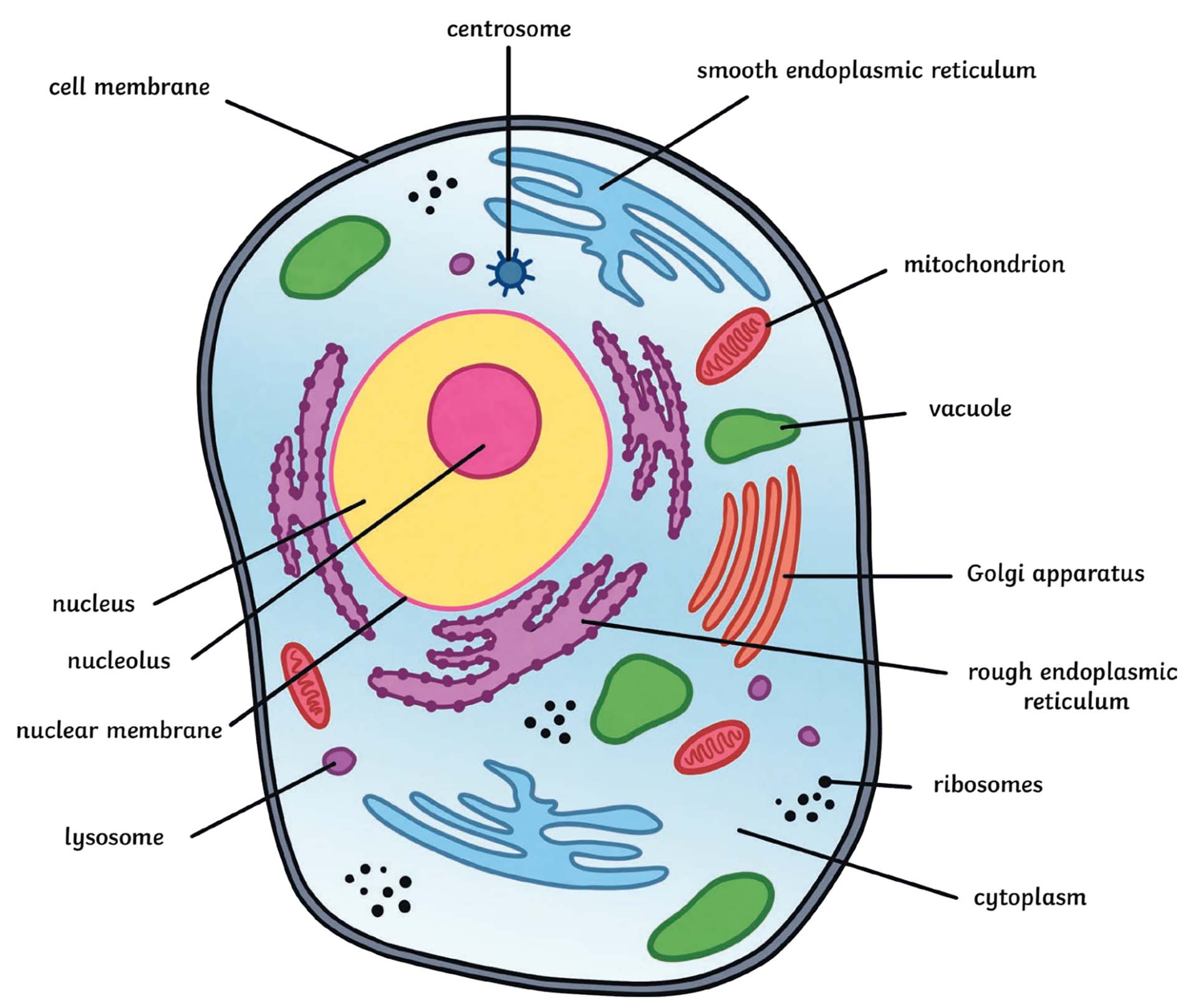The main component of an animal cell membrane is the lipid bilayer which is a phospholipid bilayer. This means that the cell membrane is made up of two layers of phospholipid molecules that form a barrier around the cell. The phospholipids have a hydrophilic (water-loving) head and a hydrophobic (water-fearing) tail.
In this article, we will delve into the main component of the animal cell membrane and discuss its role in cellular processes. We will also answer some frequently asked questions about the cell membrane and its functions.
What is Animal Cell Membrane?
The animal cell membrane is a complex and essential component of animal cells that is composed of a lipid bilayer and proteins. The lipid bilayer provides a barrier for the cell, regulates the transport of molecules, and facilitates communication between cells. Proteins are embedded in the lipid bilayer and serve various functions, such as channel proteins, transporters, and receptors.
What Is the Main Component of an Animal Cell Membrane?
The main component of the animal cell membrane is the lipid bilayer. The lipid bilayer is composed of two layers of phospholipids, with the hydrophilic (water-loving) heads facing the aqueous environment on either side of the membrane and the hydrophobic (water-fearing) tails pointing inward, away from the water.
The lipid bilayer is a crucial component of the cell membrane, providing a barrier that separates the interior of the cell from the extracellular environment. It also regulates the transport of molecules in and out of the cell and facilitates communication between cells.
The Role of Proteins in the Cell Membrane
Proteins are another essential component of the cell membrane, embedded in the lipid bilayer. They serve as channels, pumps, and transporters, regulating the transport of molecules across the membrane. Proteins also act as receptors, allowing the cell to receive signals from the environment and other cells.
How Do Membrane Proteins Work?
Membrane proteins are embedded in the lipid bilayer, with their hydrophobic regions interacting with the hydrophobic tails of the phospholipids. The hydrophilic regions of the protein protrude from the membrane, either into the extracellular environment or into the interior of the cell.
Different types of membrane proteins have different functions. Channel proteins form pores in the membrane that allow specific molecules to pass through, while transporters bind to specific molecules and move them across the membrane. Receptor proteins bind to specific molecules, such as hormones or neurotransmitters, and trigger a signaling pathway inside the cell.
What Is the Role of Cholesterol in the Cell Membrane?
Cholesterol is another important component of the animal cell membrane. It is found within the lipid bilayer, where it helps to regulate the fluidity and permeability of the membrane. Cholesterol also plays a role in signaling and cell-to-cell communication.
How Do Cells Maintain the Integrity of the Cell Membrane?
Cells use various mechanisms to maintain the integrity of the cell membrane. One important mechanism is the synthesis of new phospholipids, which can replace damaged or old lipids. Cells also use enzymes to repair the membrane, and proteins can help to form tight junctions between cells, preventing the leakage of molecules across the membrane.
FAQs
What is the function of the animal cell membrane?
The animal cell membrane serves several essential functions, including providing a barrier between the cell and its environment, regulating the transport of molecules in and out of the cell, and facilitating communication between cells.
How does the lipid bilayer provide a barrier for the cell?
The lipid bilayer provides a barrier for the cell by being selectively permeable. It only allows certain molecules to pass through, based on their size, charge, and polarity. This ensures that the cell maintains its internal environment, which is necessary for its proper function.
What happens if the cell membrane is damaged?
If the cell membrane is damaged, the cell can lose its integrity and may be unable to function properly. This can lead to the leakage of molecules across the membrane, which can be detrimental to the cell.
How do cells communicate with each other through the membrane?
Cells can communicate with each other through the membrane using receptor proteins. These proteins bind to specific molecules, such as hormones or neurotransmitters, and trigger a signaling pathway inside the cell. This allows the cell to respond to changes in its environment or to signals from other cells.
How do cells regulate the transport of molecules across the membrane?
Cells regulate the transport of molecules across the membrane using various mechanisms, including channel proteins, transporters, and pumps. These proteins can be selective, allowing only certain molecules to pass through, or they can actively transport molecules against their concentration gradient.
Can the composition of the cell membrane vary between different types of cells?
Yes, the composition of the cell membrane can vary between different types of cells. For example, the composition of the lipid bilayer can vary between different types of cells, depending on their function and environment.
Conclusion
Understanding the main component of the animal cell membrane and its functions is crucial for understanding cellular processes and how cells interact with their environment. By maintaining the integrity of the cell membrane, cells can function properly and respond to changes in their environment.
References:
- https://www.ncbi.nlm.nih.gov/books/NBK9898/
- https://www.britannica.com/science/cell-membrane

I’m Christopher Benjamin, a dedicated Animal Nutritionist at Ethos Veterinary Health with a Bachelor of Science in Animal Science from Michigan State University. My lifelong passion for animals led me to establish AnimalsData.Com. Here, I share expert advice, educational resources, and inspiring stories to empower fellow pet lovers worldwide. Join our community as we celebrate the beauty and diversity of our beloved animal companions!

